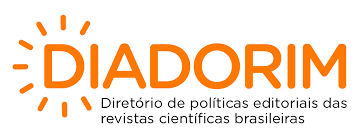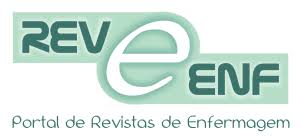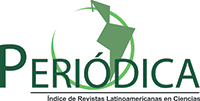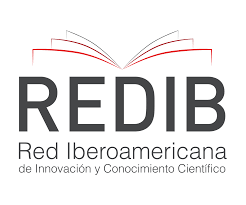OS ENFERMEIROS E A SEGURANÇA DO PACIENTE NA PRÁXIS HOSPITALAR
DOI:
https://doi.org/10.5380/ce.v21i5.45550Palavras-chave:
Enfermeiras e enfermeiros, Bases de conhecimento, Cuidados de enfermagem, Segurança do paciente, Hospitais.Resumo
Estudo de natureza qualitativa, com o objetivo de analisar o conhecimento dos enfermeiros sobre segurança do paciente no ambiente hospitalar. A pesquisa de campo foi realizada em um hospital geral do sul de Minas Gerais, em outubro de 2015, por meio de entrevistas semiestruturadas com 43 enfermeiros. Os dados foram analisados utilizando a técnica de análise de conteúdo, conforme Bardin, identificando duas categorias: conhecimento dos enfermeiros sobre segurança do paciente na práxis hospitalar e segurança do paciente na práxis do enfermeiro: fortalezas/estratégias e fragilidades/dificuldades. Os resultados apontam que os enfermeiros possuem o conhecimento sobre segurança do paciente embasado na Organização Mundial de Saúde e Programa Nacional de Segurança do Paciente e demonstram preocupação em alinhar os processos de trabalho e melhorar a cultura de segurança no serviço de saúde.
Referências
World Health Organization (WHO), World Alliance for Patient Safety. The conceptual framework for the international classification for patient safety: final technical report. Version 1.1. Genebra: WHO; 2009. 154p.
Martins M. Qualidade do cuidado em saúde. In: Sousa P, Mendes W, organizadores. Segurança do paciente: conhecendo os riscos nas organizações de saúde. Rio de Janeiro: EAD/ENSP; 2014. p.25-38.
Fonseca AD, Peterlini FL, Costa DA, coordenadores. Segurança do paciente. São Paulo: Martinari; 2014. 276p.
World Health Organization (WHO). World Alliance for Patient Safety: Forward Programme 2005. Geneva: WHO; 2004. [Internet] [acesso em 01 fev 2016]. Disponível: http://www.who.int/patientsafety/en/brochure_final.pdf
Mendes W. Taxonomia em segurança do paciente. In: Sousa P, Mendes W, organizadores. Segurança do paciente: conhecendo os riscos nas organizações de saúde. Rio de Janeiro: EAD/ENSP; 2014. p.57-72.
World Health Organization (WHO).A taxonomy for Patient Safety [Internet] 2016; [acesso em 15 fev 2016]. Disponível: http://www.who.int/patientsafety/implementation/taxonomy/en/
World Health Organization (WHO). World Alliance for Patient Safety. Global Patient Safety Challenge: 2005-2006. WHO; 2005. [Internet] [acesso em 12 fev 2016]. Disponível: http://www.who.int/patientsafety/events/05/GPSC_Launch_ENGLISH_FINAL.pdf
Ministério da Saúde (BR). Portaria n.529, de 1 de abril de 2013. Institui o Programa Nacional de Segurança do Paciente (PNSP). Ministério da Saúde; 2013. [Internet] [acesso em 26 jan 2016] Disponível: http://bvsms.saude.gov.br/bvs/saudelegis/gm/2013/prt0529_01_04_2013.html
Ministério da Saúde (BR). Documento de referência para o Programa Nacional de Segurança do Paciente. Brasília: Ministério da Saúde; 2014.
Oliveira RM, Leitão IMTA, Silva LMS, Figueiredo SV, Sampaio RL, Gondim MM. Estratégias para promover segurança do paciente. Esc Anna Nery [Internet] 2014 [acesso em 15 fev 2016]; 18(1): 122-29. Disponível: http://dx.doi.org/10.5935/1414-8145.20140018
Conselho Federal de Enfermagem. Resolução n. 311/07. Aprova a reformulação do Código de Ética dos Profissionais de Enfermagem. In: Conselho Regional de Enfermagem de Minas Gerais. Legislação e normas. Belo Horizonte: COREN (MG); 2015. p.37-54.
Marx LC. Sistema Primary Nursing como fator de humanização para a assistência de enfermagem em centro cirúrgico. Gestão do serviço de enfermagem no mundo globalizado. Rio de Janeiro: Editora Rubio; 2009. p. 161-73.
Ministério da Saúde (BR). Conselho Nacional de Saúde. Diretrizes e normas regulamentadoras de pesquisa envolvendo seres humanos. Resolução n. 466, de 12 de dezembro de 2012. Brasília; 2012.
Bardin L. Análise de conteúdo. São Paulo: Edições 70; LDA; 2013.
Brasil. Conselho Nacional de Educação. Câmara de Educação Superior. Resolução CNE/CES n. 3 de 7 de Novembro de 2001. Institui Diretrizes Curriculares Nacionais do Curso de Graduação em Enfermagem.
Agência Nacional de Vigilância Sanitária (BR).Resolução da Diretoria Colegiada n.63 de 25 de novembro de 2011. Dispõe sobre os Requisitos de Boas Práticas de Funcionamento para os Serviços de Saúde. Brasília; 2011.
Agência Nacional de Vigilância Sanitária (BR). Boletim informativo [Internet] 2005 [acesso em 16 fev 2016]. Disponível: http://www.ccs.ufrj.br/images/biosseguranca/BOLETIM%20INFORMATIVO%20ANVISA%20N58_2005.pdf
Brasil. Norma Regulamentadora n.32. Segurança e Saúde no Trabalho em Serviços de Saúde. [Internet] [acesso em 12 fev 2016]. Disponível: http://www.guiatrabalhista.com.br/legislacao/nr/nr32.htm
Taylor-Adams S, Vincent C, Street P. Systems analysis of clinical incidents: the London protocol. Clinical Risk 2004; 10(6): 211-20.
Reis CT. Cultura em segurança do paciente. In: Sousa P, Mendes W, organizadores. Segurança do paciente: criando organizações de saúde seguras. Rio de Janeiro: EAD/ENSP; 2014. p. 75-100.
Capucho HC, Cassiani SHB. Necessidade de implantar Programa de segurança do paciente no Brasil. Rev Saúde Pública [Internet] 2013; 47(4): 791-8 [acesso em 01 fev 2016]. Disponível: http://www.scielo.br/pdf/rsp/v47n4/0034-8910-rsp-47-04-0791.pdf
Paiva MCMS, Paiva SAR, Berti HW. Eventos adversos: análise de um instrumento de notificação utilizado no gerenciamento de enfermagem. Rev Esc Enferm USP [Internet] 2010; 44(2): 287-94 [acesso em 12 fev 2016]. Disponível: http://dx.doi.org/10.1590/S0080-62342010000200007
World Health Organization (WHO).10 facts on patient safety [Internet] 2014; [acesso em 15 fev 2016].Disponível:
http://www.who.int/features/factfiles/patient_safety/patient_safety_facts/en/
Ministério da Saúde (BR). Secretaria de Atenção à Saúde. Política Nacional de
Humanização. Brasília; 2013.
Downloads
Publicado
Como Citar
Edição
Seção
Licença
A Cogitare Enfermagem se reserva no direito de efetuar, no artigo publicado, alterações de ordem normativa, ortográfica e gramatical, com vistas a manter o padrão culto da língua, respeitando, porém, o estilo dos autores.
O estudo publicado é de inteira responsabilidade do(s) autor(es), cabendo exclusivamente à Cogitare Enfermagem a avaliação do manuscrito, na qualidade de veículo de publicação científica. Não será permitido acréscimo ou mudança de autoria durante a etapa de avaliação ou após aceite do texto submetido.
A Cogitare Enfermagem não se responsabiliza por eventuais violações à Lei nº 9.610/1998, Lei Brasileira de Direitos Autorais.
A Cogitare Enfermagem permite que o autor detenha o copyright dos artigos aceitos para publicação, sem restrições.
Propriedade Intelectual e Termos de uso
Responsabilidade do Autor:
Quanto a autoria, os autores necessitam especificar, na página de identificação, qual o tipo de contribuição individual que exerceu durante a elaboração do artigo. Conforme os critérios estabelecidos pelo ICMJE disponível em: http://www.icmje.org/recommendations/browse/roles-and-responsibilities/defining-the-role-of-authors-and-contributors.html .
É importante destacar que são considerados quatro critérios mínimos de autoria, e todos aqueles designados como autores devem atendê-los, são eles:
- Contribuições substanciais para a concepção ou desenho do estudo; ou a aquisição, análise ou interpretação de dados do estudo;
- Elaboração e revisão crítica do conteúdo intelectual do estudo;
- Aprovação da versão final do estudo a ser publicado;
- Responsável por todos os aspectos do estudo, assegurando as questões de precisão ou integridade de qualquer parte do estudo.
Não será permitido acréscimo ou mudança de autoria durante a etapa de avaliação ou após aceite do texto submetido.
Os artigos publicados estarão licenciados sob a licença Creative Commons CC BY 4.0 Creative Commons — Attribution 4.0 International — CC BY 4.0 – A atribuição adotada pela Cogitare Enfermagem é permitida:
- Compartilhar – copiar e redistribuir o material em qualquer mídia ou formato;
- Adaptar – remixar, transformar e construir sobre o material para qualquer finalidade, mesmo comercialmente;
- Atribuição — Você deve atribuir o devido crédito, fornecer um link para a licença, e indicar se foram feitas alterações. Você pode fazê-lo de qualquer forma razoável, mas não de uma forma que sugira que o licenciante o apoia ou aprova o seu uso;
- Sem restrições adicionais — Você não pode aplicar termos jurídicos ou medidas de caráter tecnológico que restrinjam legalmente outros de fazerem algo que a licença permita.
Responsabilidade do Site:
A Cogitare Enfermagem encoraja os Autores a arquivar seus manuscritos aceitos, publicando-os em blogs pessoais, repositórios institucionais e mídias sociais acadêmicas, bem como postando-os em suas mídias sociais pessoais, desde que seja incluída a citação completa à versão do website da revista.”























